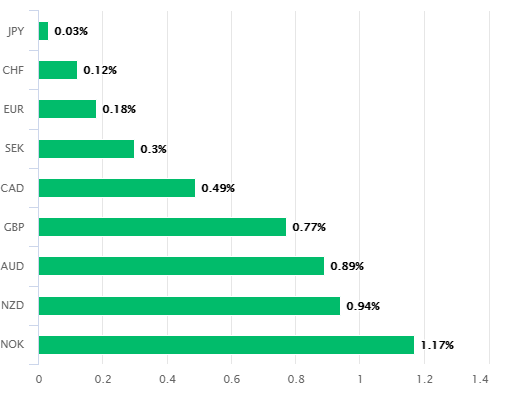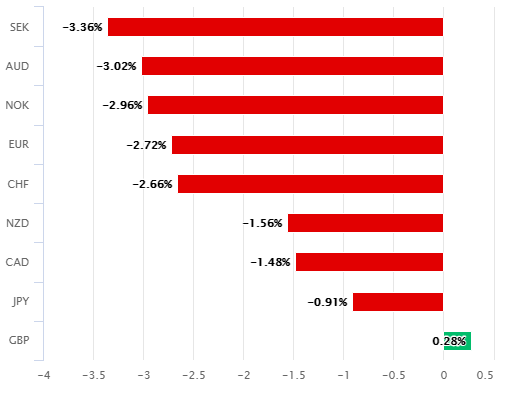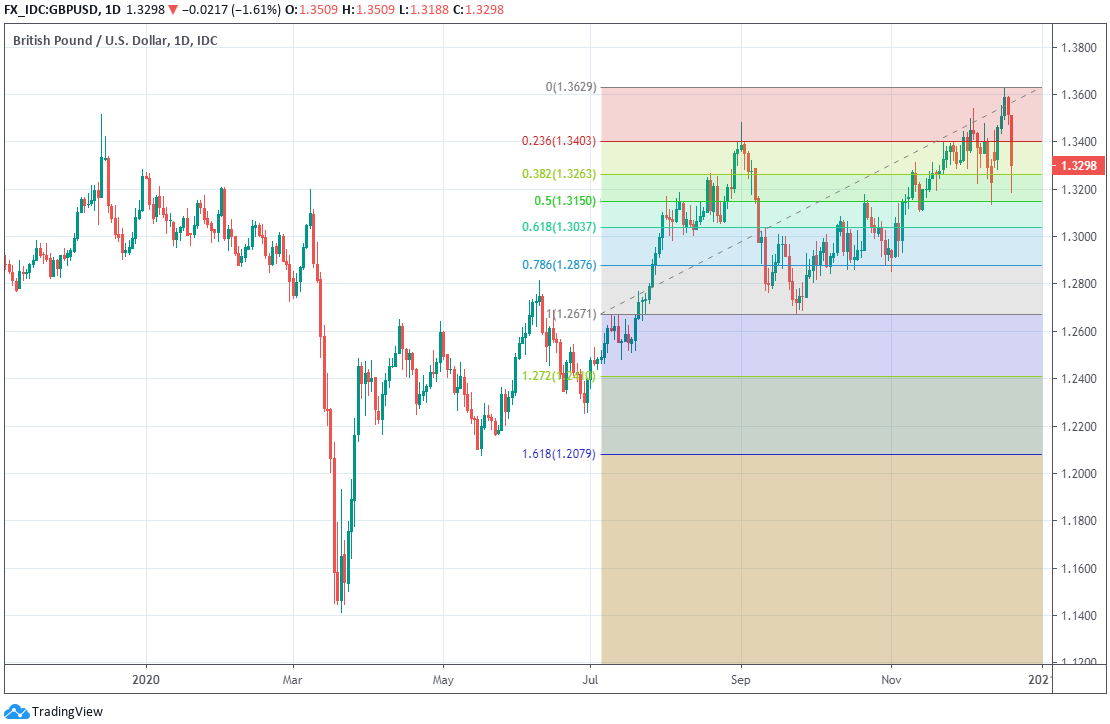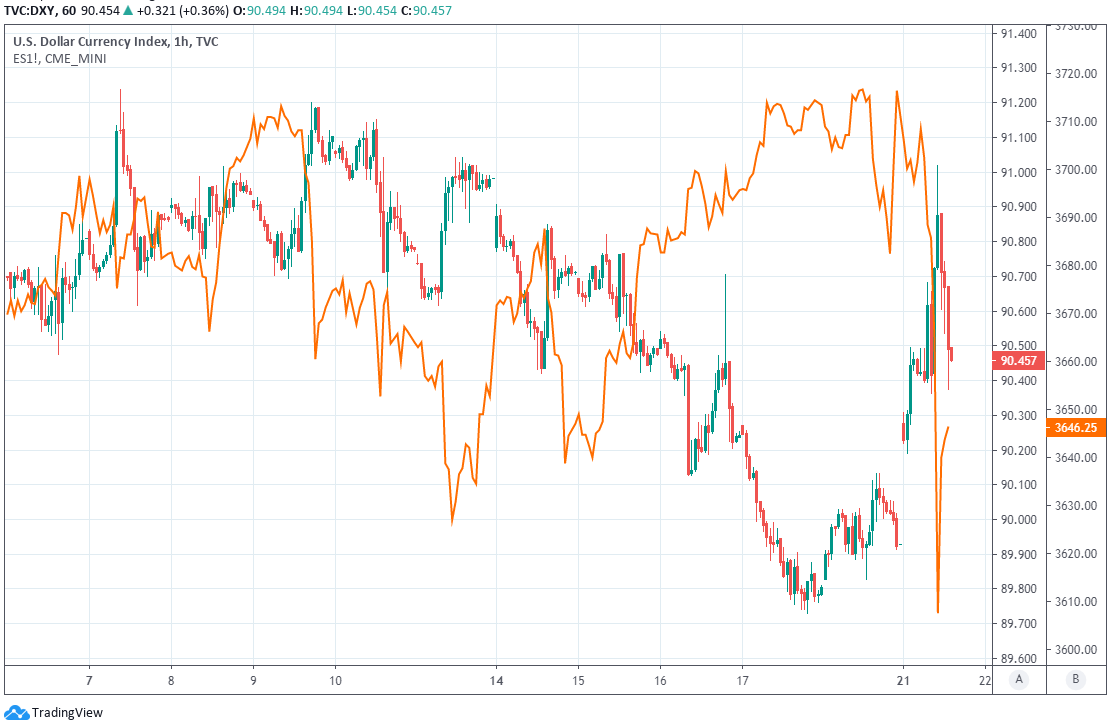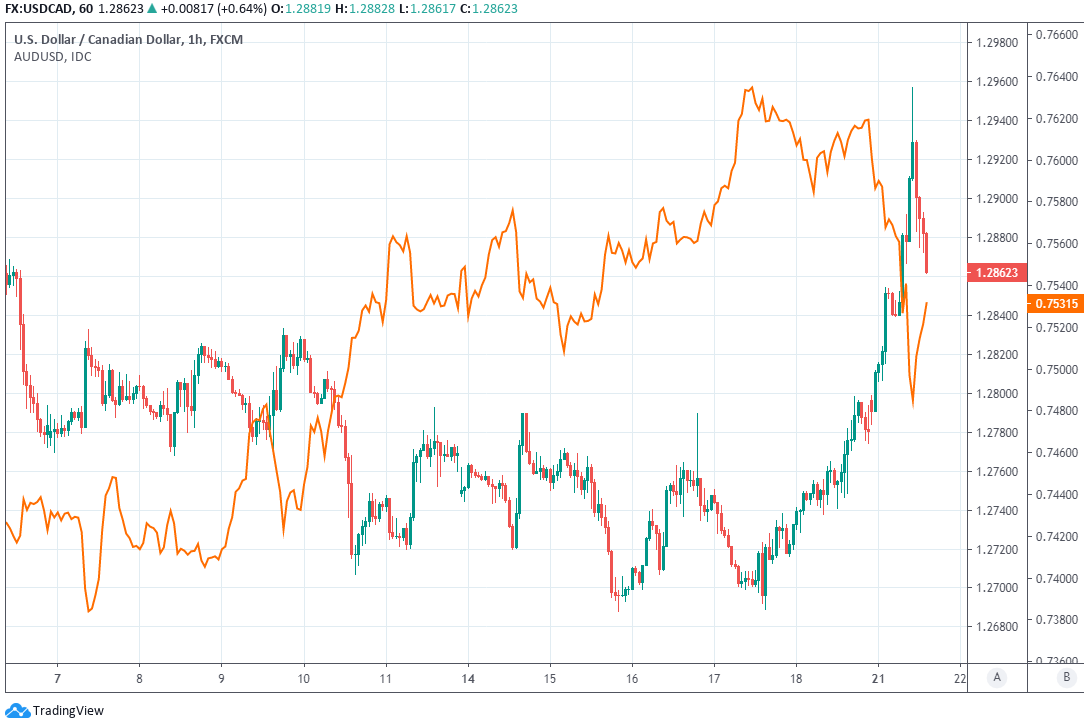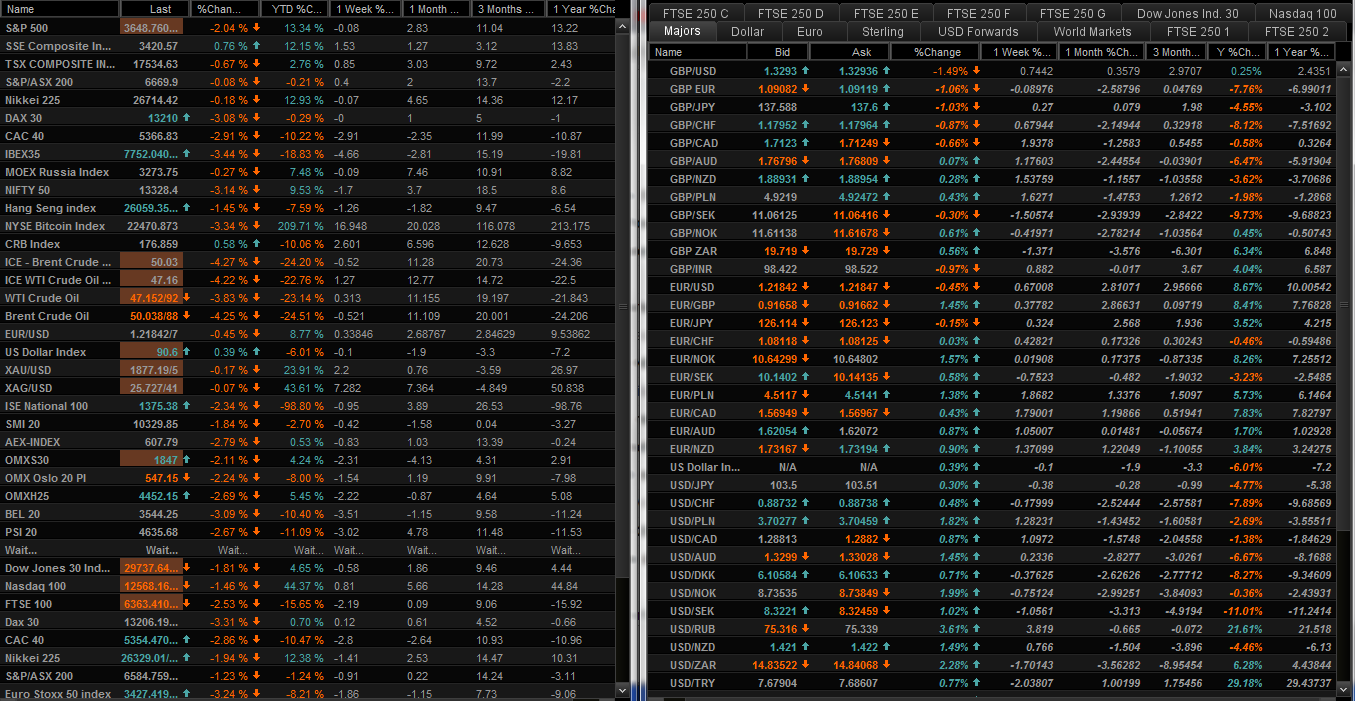U.S. Dollar: The One, True Safe Haven Rises as Coronavirus Comes for Christmas
- Written by: James Skinner
- USD rips higher in thin markets as new virus strain riles investors.
- More infectious strain comes as curveball to containment, recovery.
- GBP/USD slides to 1.3250, but GBP's Brexit bruising not yet started.
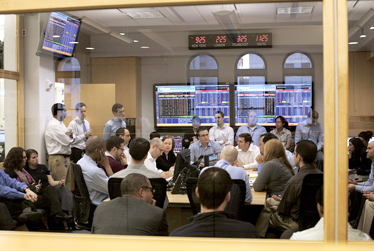
File Image © Adobe Images. Webpage Image © Federal Reserve Bank of New York, Markets Briefing Room:
- GBP/USD spot rate at time of writing: 1.3298
- Bank transfer rate (indicative guide): 1.2951-1.3044
- FX specialist providers (indicative guide): 1.3117-1.3224
- More information on FX specialist rates here
The Pound-Dollar rate slumped when the greenback leapt out of a two-year trough on Monday as a new strain of coronavirus sent a chill reverberating through holiday markets in which price swings have been exacerbated by reduced trading volumes and the resulting thin liquidity.
The great, almighty and one true safe-haven swept higher on Monday, leaving a rip tide in its wake that pulled all other currencies beneath the proverbial waves as a new and more infectious strain of coronavirus saw countries closing their borders to the world's fifth largest economy.
Great Britain was isolated in what is a holiday week for much of the Northern Hemisphere including the world's currency trading capital in London, as the government of Prime Minister Boris Johnson scrambled to assess the mortality rate of a new strain of coronavirus detected in the UK.
"The news headlines today in Europe were not good at all, but gyrations in financial markets have been exacerbated by poor liquidity (i.e. that's the bigger headline). The more important feature of today's FX and equity market fluctuations is that they occurred after a long period of rising risk tolerance," says Stephen Gallo, European head of FX strategy at BMO Capital Markets. "As of last Tuesday, the trend towards lower participation in the GBP continued. Total open interest in futures dropped to 63% of its 3-year average, with the number of both long and short contracts declining during the week to Tuesday. The point is that there doesn't seem to be much real or short-term money involved in the GBP, suggesting that any future moves between now and January 1 (up or down) will be dictated considerably by poor liquidity."
Above: Changes in major U.S. Dollar exchange rates on Monday (left) and for the month to Monday (right).
Dollar rates were universally higher and although the Brexit clock still ticks loudly in the background for holders of Pound Sterling, the pattern of performance in U.S. exchange rates as well as the wider global markets was indicative of investors having bigger concerns than Blighty's ongoing battle with the EU. The Pound fell sharply against the greenback but was higher relative to the Australian and Kiwi Dollars as well as the oil-linked Norwegian Krone.
"Vaccine news and the perception that the Fed will lean on the yield curve if necessary has been supporting risk appetite, though there are clear signs of fraying sentiment this morning. Going forward it is possible that risk appetite could be kept in check by the realisation that economic data are likely to worsen before they improve." says Jane Foley, a senior FX strategist at Rabobank.
Above: Pound-Dollar rate at daily intervals, attempts to recover 38.2% Fibonacci retracement (1.3263) of September's rally
With the thin liquidity of holiday week aside, the unravelling of stock markets and risk currencies results from uncertainty about whether the new strain of coronavirus will respond to any of the vaccines on which investors have staked their hopes as well as expectations for a robust 2021 economic recovery.
"A new, more easily transmissible strain of the virus and the tightening of lockdowns have dented confidence as to how quickly economies – particularly in Europe - can get back on their feet. So far, the news has merely delayed recovery expectations and demanded modest corrections," says Chris Turner, global head of markets and regional head of research at ING. "As long as vaccine efficacy rates crucially do not come into question, we suspect that very stimulative policy (it looks like US Congress will sign off on a $900bn stimulus package today) should limit the downside for activity currencies and limit the upside for the dollar. Let’s see whether this DXY rally stalls at 90.50."
Above: Dollar Index shown at hourly intervals alongside S&P 500 futures (orange line).
For the UK however, it faces potentially months of economic closures that were not anticipated by the markets. This after health secretary Matt Hanckock suggested that a new state of 'lockdown' might need to remain in force until vaccines are available nationwide.
"We doubt that the BoE will be watching specific levels in the GBP, as intervention is a thing of the past. However, zero liquidity is something that the Bank would be more interested in - though there is no guarantee things will become that bad over the forthcoming weeks," says BMO's Gallo. "The 100 pip rally in USDCAD thus far today is well aligned with the deterioration in risk appetite (our USDCAD model currently reads fair value at 1.2758, with the DXY, copper and the S&P 500 still the pair's lead predictors)."
Above: USD/CAD shown at hourly intervals alongside AUD/USD (orange line).
All asset prices and exchange rates will be susceptible this week to profit-taking and exaggerated moves given the impact that a holiday-shortened Christmas week could have on trading volumes. This could result in continued widespread gains for the Dollar. Thus far the Dollar's rip higher has been less ferocious than that seen in March when the greenback swept the board of opposition with shock-and-awe inspiring gains over all currencies, which is all the more notable in light of holiday week's impaired liquidity.
This lesser response of the worlds' one true safe-haven is testament to the effectiveness of action by the Federal Reserve (Fed) earlier this year to prevent further destabilising surges in the greenback, although and however, it's also a symptom of another problem and unintended consequence of the Fed's actions. U.S. Dollar declines have been so significant they may've set the stage for a 2021 currency war that leaves no exchange rate or country untouched.
Above: Various global markets (left) and currency exchange rates (right) at noon in London on Monday.

